In order to promote reproducibility in our research, authors of accepted papers will be invited to submit supporting materials to the Artifact Evaluation process. The Artifact Evaluation process is run by a separate committee whose task is to reproduce (at least some) experiments and assess how the artifacts support the work described in the papers.
Artifact submission will not influence the final decision regarding the papers, and papers that go through the Artifact Evaluation process successfully will receive badges assessing the level of reproducibility of the work (more information on the subject available on the ACM website: https://www.acm.org/publications/policies/artifact-review-badging).
We would also encourage authors to make supporting materials publicly available, for example by including them as “source materials” in the ACM Digital Library.
Authors of accepted CC 2021 papers are invited to formally submit their supporting materials to the Artifact Evaluation (AE) process. The Artifact Evaluation Committee attempts to reproduce (at least the main) experiments and assesses if submitted artifacts support the claims made in the paper. The submission is voluntary and does not influence the final decision regarding paper acceptance.
We invite every author of an accepted CC paper to consider submitting an artifact. At CC we follow ACM’s artifact reviewing and badging policy. ACM describes a research artifact as follows:
By “artifact” we mean a digital object that was either created by the authors to be used as part of the study or generated by the experiment itself. For example, artifacts can be software systems, scripts used to run experiments, input datasets, raw data collected in the experiment, or scripts used to analyze results.
Submission
Authors must submit:
- the paper that has been accepted for publication at CC, extended with
- an appendix providing a link to and a description of the artifact. We recommend using this AE appendix template from ctuning.org where you can also find a detailed description of what information to provide.
For the artifact itself, we encourage the use of container or VM technologies like Docker, Singularity, Virtual Box or Vagrant to package the artifact in one stand-alone container or VM which provides all required dependencies. Giving AE reviewers remote access to your machines with preinstalled (proprietary) software is also possible.
If you have an unusual experimental setup that requires specific hardware (i.e., custom hardware, oscilloscopes for measurements …) or proprietary software please contact the artifact evaluation chairs before the submission.
There are more tips for preparing a submission available on the ctuning website.
Evaluation Process
Each submitted artifact is evaluated by at least two members of the artifact evaluation committee.
During the process authors and evaluators are allowed to anonymously communicate with each other to overcome technical difficulties.
Ideally, we hope to see all submitted artifacts to successfully pass artifact evaluation.
The evaluators are asked to evaluate the artifact based on the following criteria, that are defined by ACM.
Is the artifact functional?
- Package complete? Are all components relevant to evaluation included in the package?
- Well documented? Is the documentation enough to understand, install, and evaluate the artifact?
- Exercisable? Does it include scripts and/or software to perform appropriate experiments and generate results?
- Consistent? Are artifacts relevant to the associated paper and contribute in some inherent way to the generation of its main results?
The artifacts associated with the paper will receive an “Artifacts Evaluated - Functional” badge only if they are found to be documented, consistent, complete, exercisable, and include appropriate evidence of verification and validation.
Is the artifact customizable and reusable?
- Can this artifact and experimental workflow be easily reused and customized?
For example, can it be used on a different platform, with different benchmarks, data sets, compilers, tools, under different conditions and parameters, etc.?
The artifacts associated with the paper will receive an “Artifact Evaluated - Reusable” badge only if they are of a quality that significantly exceeds minimal functionality. That is, they have all the qualities of the Artifacts Evaluated - Functional level, but, in addition, they are very carefully documented and well-structured to the extent that reuse and repurposing are facilitated. In particular, norms and standards of the research community for artifacts of this type are strictly adhered to.
Have the results been validated?
- Can all main results from the paper be validated using provided artifacts?
Evaluators are asked to report any unexpected artifact behavior (depends on the type of artifact such as unexpected output, scalability issues, crashes, performance variation, etc).
The artifacts associated with the paper will receive a “Results replicated” badge only if the main results of the paper have been obtained in a subsequent study by a person or team other than the authors, using, in part, artifacts provided by the author. Note that variation of empirical and numerical results is tolerated. In fact, it is often unavoidable in computer systems research - see “how to report and compare empirical results?” in AE FAQ on ctuning.org!
Based on the results, the following badges are awarded.
Badges
ACM recommends awarding three different types of badges to communicate how the artifact has been evaluated. A single paper can receive up to three badges — one badge of each type.
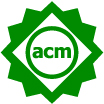 | The green Artifacts Available badge indicates that an artifact is publicly accessible in an archival repository. For this badge to be awarded the paper does not have to be independently evaluated. ACM requires that a qualified archival repository is used, for example, Zenodo, figshare, Dryad. Personal webpages, GitHub repositories, or alike are not sufficient as it can be changed after the submission deadline! | |
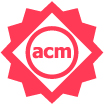 | 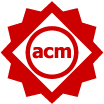 | The red Artifacts Evaluated badges indicate that a research artifact has been successfully completed an independent audit. A reviewer has verified that the artifact is documented, complete, consistent, exercisable, and include appropriate evidence of verification and validation. Two levels are distinguished: The lighter red Artifacts Evaluated — Functional badge indicates a basic level of functionality. The darker red Artifacts Evaluated — Reusable badge indicates a higher quality artifact which significantly exceeds minimal functionality so that reuse and repurposing are facilitated. Artifacts need not be made publicly available to be considered for one of these badges. However, they do need to be made available to reviewers. |
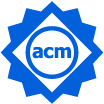 | 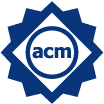 | The blue Results Validated badges indicate that the main results of the paper have been successfully obtained by an independent reviewer. Two levels are distinguished: The darker blue Results Reproduced badge indicates that the main results of the paper have been successfully obtained using the provided artifact. The lighter blue Results Replicated badge indicates that the main results of the paper have been independently obtained without using the author-provided research artifact. Artifacts need not be made publicly available to be considered for one of these badges. However, they do need to be made available to reviewers. |
At CC the artifact evaluation committee awards for each successfully evaluated paper, one of the two red Artifacts Evaluated badges as well as the darker blue Results Reproduced badge. We do not award the lighter blue Results Replicated badge in this artifact evaluation process. The green Artifact Available badge does not require the formal audit and, therefore, is awarded directly by the publisher — if the authors provide a link to the deposited artifact.
Tue 2 MarDisplayed time zone: Eastern Time (US & Canada) change
12:15 - 12:30 | CC OpeningCC Research Papers at CC Virtual Room Chair(s): Aaron Smith University of Edinburgh; Microsoft, Delphine Demange Univ Rennes, Inria, CNRS, IRISA, Rajiv Gupta UC Riverside | ||
12:30 - 13:15 | |||
12:30 15mTalk | Data-Aware Process Networks CC Research Papers | ||
12:45 15mTalk | Integrating a Functional Pattern-Based IR into MLIR CC Research Papers Martin Lücke University of Edinburgh, Michel Steuwer University of Edinburgh, Aaron Smith University of Edinburgh; Microsoft | ||
13:00 15mTalk | Compiling Data-Parallel Datalog CC Research Papers Thomas Gilray University of Alabama at Birmingham, Sidharth Kumar University of Alabama at Birmingham, Kristopher Micinski Syracuse University | ||
13:15 - 13:30 | |||
13:30 - 14:15 | |||
13:30 15mTalk | PGZ: Automatic Zero-Value Code Specialization CC Research Papers | ||
13:45 15mTalk | Exploring the Space of Optimization Sequences for Code-Size Reduction: Insights and Tools CC Research Papers Anderson Faustino da Silva State University of Maringá, Bernardo N. B. de Lima Federal University of Minas Gerais, Fernando Magno Quintão Pereira Federal University of Minas Gerais | ||
14:00 15mTalk | PolyBench/Python: Benchmarking Python Environments with Polyhedral Optimizations CC Research Papers Miguel Á. Abella-González Universidade da Coruña, Pedro Carollo-Fernández Universidade da Coruña, Louis-Noël Pouchet Colorado State University, Fabrice Rastello Inria, Gabriel Rodríguez Universidade da Coruña | ||
14:30 - 15:30 | |||
14:30 60mMeeting | CC Business Meeting CC Research Papers | ||
Wed 3 MarDisplayed time zone: Eastern Time (US & Canada) change
10:00 - 10:45 | Safety & CorrectnessCC Research Papers at CC Virtual Room Chair(s): Jan Vitek Northeastern University / Czech Technical University | ||
10:00 15mTalk | A Modern Compiler for the French Tax Code CC Research Papers Denis Merigoux Inria, Raphaël Monat Sorbonne University; CNRS; LIP6, Jonathan Protzenko Microsoft Research | ||
10:15 15mTalk | NSan: A Floating-Point Numerical Sanitizer CC Research Papers Clement Courbet Google Research | ||
10:30 15mTalk | Communication-Safe Web Programming in TypeScript with Routed Multiparty Session Types CC Research Papers Anson Miu Imperial College London; Bloomberg, Francisco Ferreira Imperial College London, Nobuko Yoshida Imperial College London, Fangyi Zhou Imperial College London Pre-print Media Attached | ||
10:45 - 11:10 | |||
11:10 - 11:55 | Code Generation & Binary AnalysisCC Research Papers at CC Virtual Room Chair(s): Bernhard Egger Seoul National University | ||
11:10 15mTalk | Helper Function Inlining in Dynamic Binary Translation CC Research Papers Wenwen Wang University of Georgia | ||
11:25 15mTalk | Lightning BOLT: Powerful, Fast, and Scalable Binary Optimization CC Research Papers Maksim Panchenko Facebook, Rafael Auler Facebook, Laith Sakka Purdue University, Guilherme Ottoni Facebook | ||
11:40 15mTalk | Compact Native Code Generation for Dynamic Languages on Micro-core Architectures CC Research Papers | ||
11:55 - 12:30 | |||
12:30 - 13:00 | Natural & Source Language AnalysisCC Research Papers at CC Virtual Room Chair(s): Zhijia Zhao UC Riverside | ||
12:30 15mTalk | Deep NLP-Based Co-evolvement for Synthesizing Code Analysis from Natural Language CC Research Papers Zifan Nan North Carolina State University, Hui Guan University of Massachusetts at Amherst, Xipeng Shen North Carolina State University, Chunhua Liao Lawrence Livermore National Laboratory | ||
12:45 15mTalk | Resolvable Ambiguity: Principled Resolution of Syntactically Ambiguous Programs CC Research Papers | ||
13:00 - 13:15 | CC ClosingCC Research Papers at CC Virtual Room Chair(s): Aaron Smith University of Edinburgh; Microsoft, Delphine Demange Univ Rennes, Inria, CNRS, IRISA, Rajiv Gupta UC Riverside | ||
13:15 - 13:30 | |||
Call for Artifacts
Authors of accepted CC 2021 papers are invited to formally submit their supporting materials to the Artifact Evaluation (AE) process. The Artifact Evaluation Committee attempts to reproduce (at least the main) experiments and assesses if submitted artifacts support the claims made in the paper. The submission is voluntary and does not influence the final decision regarding paper acceptance.
We invite every author of an accepted CC paper to consider submitting an artifact. At CC we follow ACM’s artifact reviewing and badging policy. ACM describes a research artifact as follows:
By “artifact” we mean a digital object that was either created by the authors to be used as part of the study or generated by the experiment itself. For example, artifacts can be software systems, scripts used to run experiments, input datasets, raw data collected in the experiment, or scripts used to analyze results.
Submission
Authors must submit:
- the paper that has been accepted for publication at CC, extended with
- an appendix providing a link to and a description of the artifact. We recommend using this AE appendix template from ctuning.org where you can also find a detailed description of what information to provide.
For the artifact itself, we encourage the use of container or VM technologies like Docker, Singularity, Virtual Box or Vagrant to package the artifact in one stand-alone container or VM which provides all required dependencies. Giving AE reviewers remote access to your machines with preinstalled (proprietary) software is also possible.
If you have an unusual experimental setup that requires specific hardware (i.e., custom hardware, oscilloscopes for measurements …) or proprietary software please contact the artifact evaluation chairs before the submission.
There are more tips for preparing a submission available on the ctuning website.
Evaluation Process
Each submitted artifact is evaluated by at least two members of the artifact evaluation committee.
During the process authors and evaluators are allowed to anonymously communicate with each other to overcome technical difficulties.
Ideally, we hope to see all submitted artifacts to successfully pass artifact evaluation.
The evaluators are asked to evaluate the artifact based on the following criteria, that are defined by ACM.
Is the artifact functional?
- Package complete? Are all components relevant to evaluation included in the package?
- Well documented? Is the documentation enough to understand, install, and evaluate the artifact?
- Exercisable? Does it include scripts and/or software to perform appropriate experiments and generate results?
- Consistent? Are artifacts relevant to the associated paper and contribute in some inherent way to the generation of its main results?
The artifacts associated with the paper will receive an “Artifacts Evaluated - Functional” badge only if they are found to be documented, consistent, complete, exercisable, and include appropriate evidence of verification and validation.
Is the artifact customizable and reusable?
- Can this artifact and experimental workflow be easily reused and customized?
For example, can it be used on a different platform, with different benchmarks, data sets, compilers, tools, under different conditions and parameters, etc.?
The artifacts associated with the paper will receive an “Artifact Evaluated - Reusable” badge only if they are of a quality that significantly exceeds minimal functionality. That is, they have all the qualities of the Artifacts Evaluated - Functional level, but, in addition, they are very carefully documented and well-structured to the extent that reuse and repurposing are facilitated. In particular, norms and standards of the research community for artifacts of this type are strictly adhered to.
Have the results been validated?
- Can all main results from the paper be validated using provided artifacts?
Evaluators are asked to report any unexpected artifact behavior (depends on the type of artifact such as unexpected output, scalability issues, crashes, performance variation, etc).
The artifacts associated with the paper will receive a “Results replicated” badge only if the main results of the paper have been obtained in a subsequent study by a person or team other than the authors, using, in part, artifacts provided by the author. Note that variation of empirical and numerical results is tolerated. In fact, it is often unavoidable in computer systems research - see “how to report and compare empirical results?” in AE FAQ on ctuning.org!
Based on the results, the following badges are awarded.
Badges
ACM recommends awarding three different types of badges to communicate how the artifact has been evaluated. A single paper can receive up to three badges — one badge of each type.
 | The green Artifacts Available badge indicates that an artifact is publicly accessible in an archival repository. For this badge to be awarded the paper does not have to be independently evaluated. ACM requires that a qualified archival repository is used, for example, Zenodo, figshare, Dryad. Personal webpages, GitHub repositories, or alike are not sufficient as it can be changed after the submission deadline! | |
 |  | The red Artifacts Evaluated badges indicate that a research artifact has been successfully completed an independent audit. A reviewer has verified that the artifact is documented, complete, consistent, exercisable, and include appropriate evidence of verification and validation. Two levels are distinguished: The lighter red Artifacts Evaluated — Functional badge indicates a basic level of functionality. The darker red Artifacts Evaluated — Reusable badge indicates a higher quality artifact which significantly exceeds minimal functionality so that reuse and repurposing are facilitated. Artifacts need not be made publicly available to be considered for one of these badges. However, they do need to be made available to reviewers. |
 |  | The blue Results Validated badges indicate that the main results of the paper have been successfully obtained by an independent reviewer. Two levels are distinguished: The darker blue Results Reproduced badge indicates that the main results of the paper have been successfully obtained using the provided artifact. The lighter blue Results Replicated badge indicates that the main results of the paper have been independently obtained without using the author-provided research artifact. Artifacts need not be made publicly available to be considered for one of these badges. However, they do need to be made available to reviewers. |
At CC the artifact evaluation committee awards for each successfully evaluated paper, one of the two red Artifacts Evaluated badges as well as the darker blue Results Reproduced badge. We do not award the lighter blue Results Replicated badge in this artifact evaluation process. The green Artifact Available badge does not require the formal audit and, therefore, is awarded directly by the publisher — if the authors provide a link to the deposited artifact.